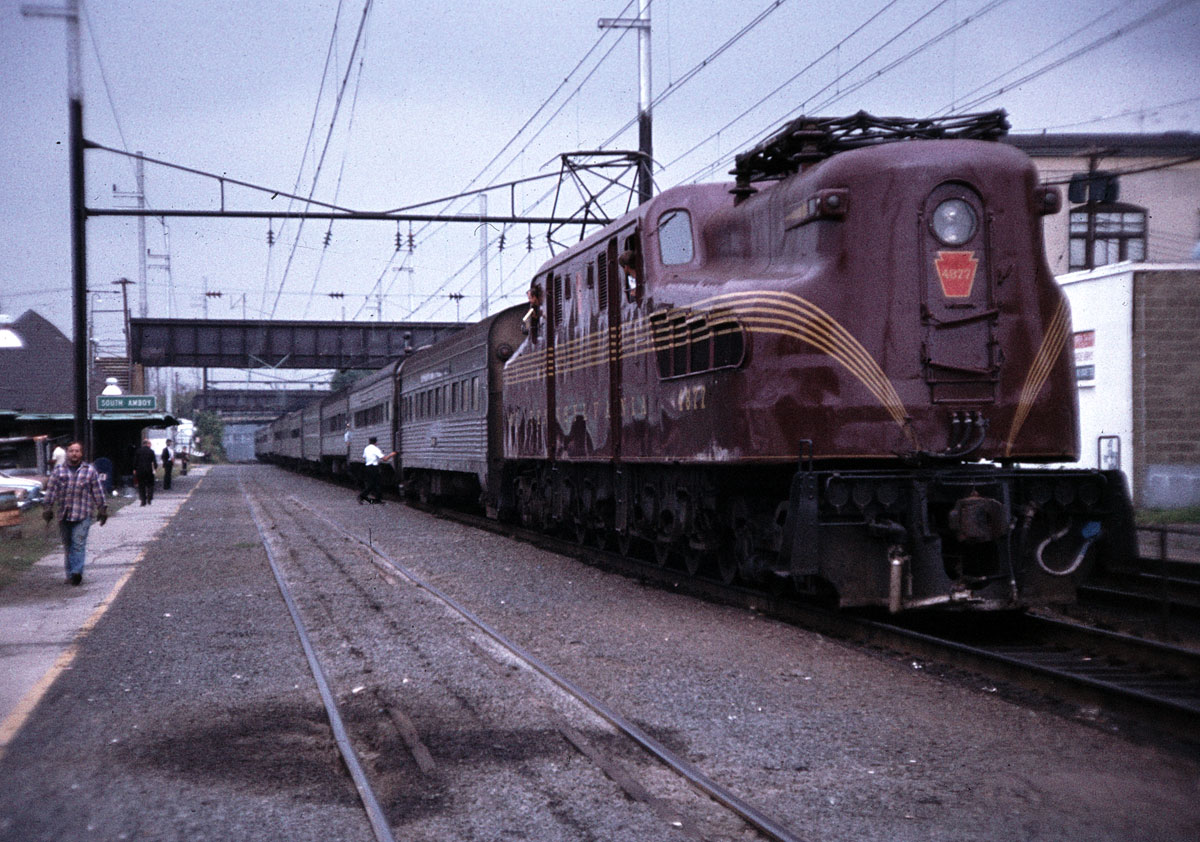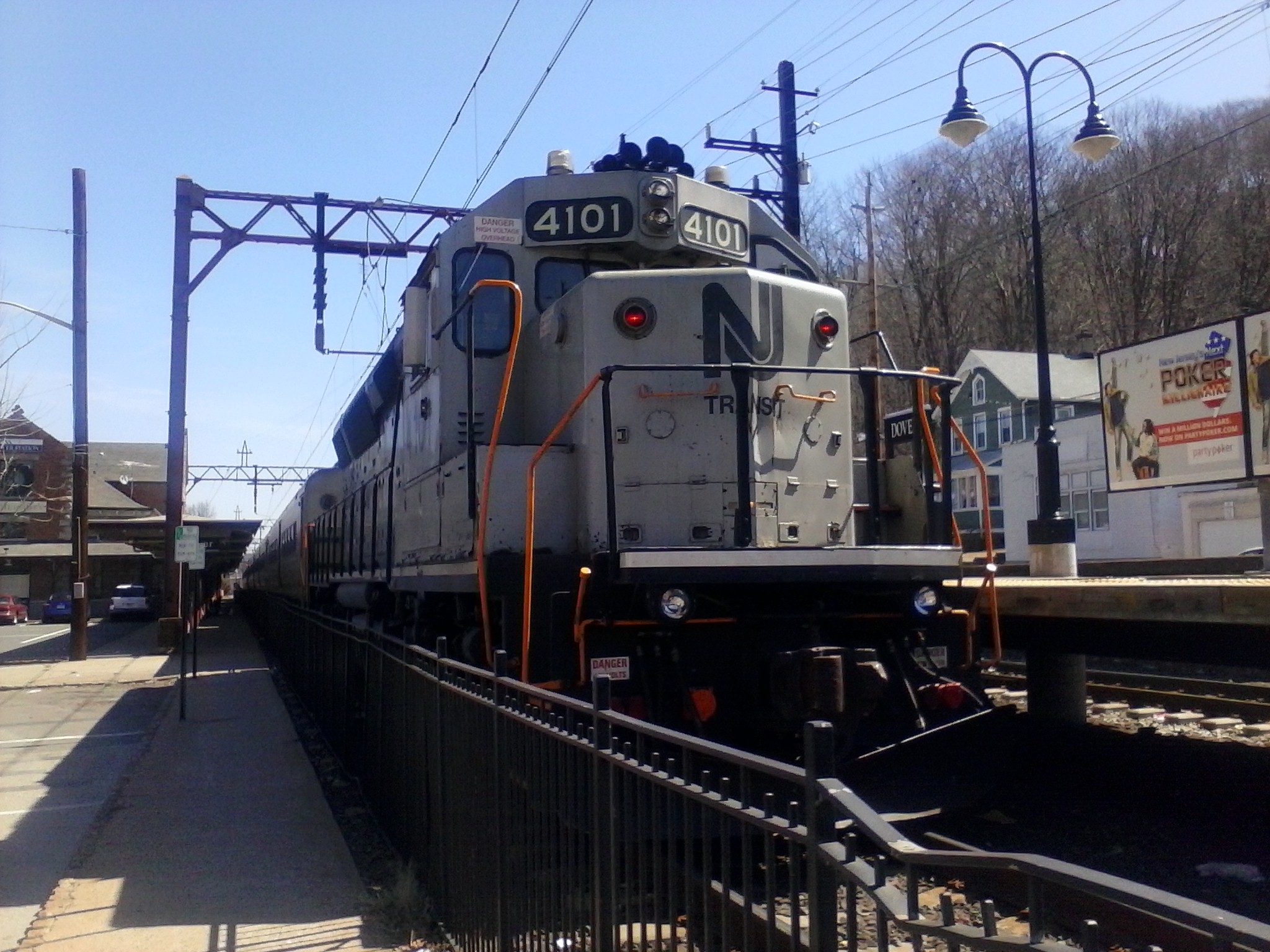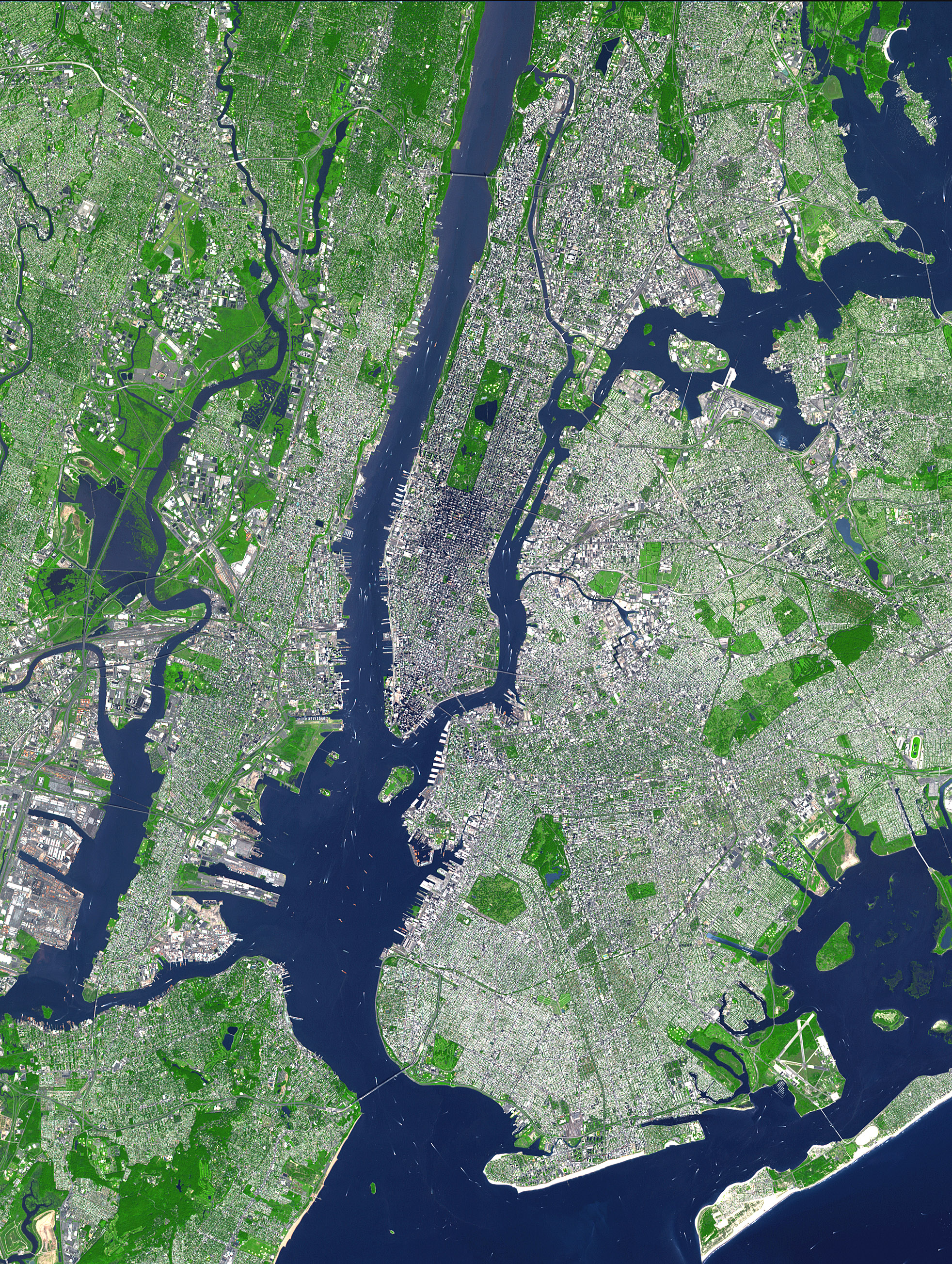|
Bergen Tunnels
The Bergen Tunnels are a pair of railroad tunnels with open cuts running parallel to each other under Bergen Hill in Jersey City, New Jersey, U.S. Originally built by the Delaware, Lackawanna and Western Railroad (DL&W), they are used by New Jersey Transit Rail Operations (NJT) trains originating or terminating at Hoboken Terminal. Construction Prior to construction, the Morris and Essex Railroad, a predecessor of the DL&W, used the Long Dock Tunnel, owned by the Erie Railroad, to pass under the Hudson Palisades. After issues of congestion and competition arose, the DL&W decided to build its own tunnel for what is commonly known as its Morristown Line. Construction of the North Bergen Tunnel began in 1873; it came into service in 1877. The South Bergen Tunnel opened in 1910, soon after a new Hoboken Terminal was inaugurated. Both tunnels are approximately long, and have two short segments of open cut as well as ventilation shafts. Rehabilitation In 2001, New Jersey Transit ... [...More Info...] [...Related Items...] OR: [Wikipedia] [Google] [Baidu] |
New Jersey Transit
New Jersey Transit Corporation, branded as NJ Transit, and often shortened to NJT, is a state-owned public transportation system that serves the U.S. state of New Jersey, along with portions of New York State and Pennsylvania. It operates bus, light rail, and commuter rail services throughout the state, connecting to major commercial and employment centers both within the state and in the adjacent major cities of New York and Philadelphia. In , the system had a ridership of . Covering a service area of , NJT is the largest statewide public transit system and the third-largest provider of bus, rail, and light rail transit by ridership in the United States. NJT also acts as a purchasing agency for many private operators in the state; in particular, buses to serve routes not served by the transit agency. History NJT was founded on July 17, 1979, an offspring of the New Jersey Department of Transportation (NJDOT), mandated by the state government to address many then-pressi ... [...More Info...] [...Related Items...] OR: [Wikipedia] [Google] [Baidu] |
Tunnels Completed In 1877
A tunnel is an underground passageway, dug through surrounding soil, earth or rock, and enclosed except for the entrance and exit, commonly at each end. A pipeline is not a tunnel, though some recent tunnels have used immersed tube construction techniques rather than traditional tunnel boring methods. A tunnel may be for foot or vehicular road traffic, for rail traffic, or for a canal. The central portions of a rapid transit network are usually in the tunnel. Some tunnels are used as sewers or aqueducts to supply water for consumption or for hydroelectric stations. Utility tunnels are used for routing steam, chilled water, electrical power or telecommunication cables, as well as connecting buildings for convenient passage of people and equipment. Secret tunnels are built for military purposes, or by civilians for smuggling of weapons, contraband, or people. Special tunnels, such as wildlife crossings, are built to allow wildlife to cross human-made barriers safely. Tunne ... [...More Info...] [...Related Items...] OR: [Wikipedia] [Google] [Baidu] |
Transportation In Jersey City, New Jersey
Transport (in British English), or transportation (in American English), is the intentional movement of humans, animals, and goods from one location to another. Modes of transport include air, land (rail and road), water, cable, pipeline, and space. The field can be divided into infrastructure, vehicles, and operations. Transport enables human trade, which is essential for the development of civilizations. Transport infrastructure consists of both fixed installations, including roads, railways, airways, waterways, canals, and pipelines, and terminals such as airports, railway stations, bus stations, warehouses, trucking terminals, refueling depots (including fueling docks and fuel stations), and seaports. Terminals may be used both for interchange of passengers and cargo and for maintenance. Means of transport are any of the different kinds of transport facilities used to carry people or cargo. They may include vehicles, riding animals, and pack animals. Vehicles may incl ... [...More Info...] [...Related Items...] OR: [Wikipedia] [Google] [Baidu] |
Railroad Tunnels In New Jersey
Rail transport (also known as train transport) is a means of transport that transfers passengers and goods on wheeled vehicles running on rails, which are incorporated in Track (rail transport), tracks. In contrast to road transport, where the vehicles run on a prepared flat surface, rail vehicles (rolling stock) are directionally guided by the tracks on which they run. Tracks usually consist of steel rails, installed on Railroad tie, sleepers (ties) set in track ballast, ballast, on which the rolling stock, usually fitted with metal wheels, moves. Other variations are also possible, such as "slab track", in which the rails are fastened to a concrete foundation resting on a prepared subsurface. Rolling stock in a rail transport system generally encounters lower friction, frictional resistance than rubber-tyred road vehicles, so passenger and freight cars (carriages and wagons) can be coupled into longer trains. The rail transport operations, operation is carried out by a ... [...More Info...] [...Related Items...] OR: [Wikipedia] [Google] [Baidu] |
NJ Transit Rail Operations
NJ Transit Rail Operations is the rail division of NJ Transit. It operates commuter rail service in New Jersey, with most service centered on transportation to and from New York City, Hoboken, and Newark. NJ Transit also operates rail service in Orange and Rockland counties in New York under contract to Metro-North Railroad. The commuter rail lines saw riders in , making it the second-busiest commuter railroad in North America as well as the longest by route length. This does not include NJ Transit's light rail operations. Network and infrastructure The lines operated by NJ Transit were formerly operated by the Pennsylvania Railroad, Central Railroad of New Jersey, New York and Long Branch Railroad and Erie Lackawanna Railroad, most of which date from the mid-19th century. From the 1960s onward, the New Jersey Department of Transportation began subsidizing the commuter lines. By 1976, the lines were all operated by Conrail under contract to NJDOT. The system took its curr ... [...More Info...] [...Related Items...] OR: [Wikipedia] [Google] [Baidu] |
Timeline Of Jersey City, New Jersey-area Railroads
__NOTOC__ For the purposes of this article, the Jersey City area extends North to Edgewater (the Northern end of the line along the Hudson River), South to Bayonne and includes Kearny Junction and Harrison but not Newark. Many routes east of Newark are listed here. Railroad Name Abbreviations *B&O: Baltimore and Ohio Railroad *CNJ: Central Railroad of New Jersey *CRCX: Conrail Shared Assets Operations *DL&W: Delaware, Lackawanna, and Western Railroad *Erie: Erie Railroad *LV: Lehigh Valley Railroad *NYC: New York Central Railroad *NYO&W: New York, Ontario and Western Railway *NYS&W: New York, Susquehanna and Western Railway *PATH: Port Authority Trans-Hudson *PRR: Pennsylvania Railroad *RDG: Reading Railroad 1833 *November 28: The Paterson and Hudson River Railroad (Erie) opens at Marion Junction, ending at the New Jersey Railroad (PRR). 1834 * September 15: The New Jersey Railroad, which 38 years later would become the Pennsylvania Railroad (PRR), begins regular trips fr ... [...More Info...] [...Related Items...] OR: [Wikipedia] [Google] [Baidu] |
List Of Bridges, Tunnels, And Cuts In Hudson County, New Jersey
This is a list of vehicular and rail bridges, tunnels, and cuts in Hudson County, New Jersey. Located in the northeastern part of New Jersey Hudson lies at the heart of the Port of New York and New Jersey and is a major crossroads of the New York Metropolitan area and Northeast Megalopolis. Located on two peninsulas, formerly known as Bergen Neck and New Barbadoes Neck, it has extensive waterfront along the Hudson River, Upper New York Bay, Kill van Kull, Newark Bay and the Hackensack and Passaic Rivers. The main part of Hudson lies on Bergen Hill, the southern emergence of the Hudson Palisades, starting at sea level at Bergen Point and rising to 260 feet travelling through Bayonne, Jersey City and North Hudson. Secaucus and most of West Hudson are part of the New Jersey Meadowlands. Listings are generally from south to north. __TOC__ Hudson River Kill van Kull and Newark Bay Hackensack River Passaic River Bergen Hill-Hudson Palisades Meadowlan ... [...More Info...] [...Related Items...] OR: [Wikipedia] [Google] [Baidu] |
Hudson County, New Jersey
Hudson County is the most densely populated county in the U.S. state of New Jersey. It lies west of the lower Hudson River, which was named for Henry Hudson, the sea captain who explored the area in 1609. Part of New Jersey's Gateway Region in the New York metropolitan area, the county's county seat and largest city is Jersey City,New Jersey County Map New Jersey Department of State. Accessed July 10, 2017. whose population as of the was 292,449. As of the |
Historic American Engineering Record
Heritage Documentation Programs (HDP) is a division of the U.S. National Park Service (NPS) responsible for administering the Historic American Buildings Survey (HABS), Historic American Engineering Record (HAER), and Historic American Landscapes Survey (HALS). These programs were established to document historic places in the United States. Records consist of measured drawings, archival photographs, and written reports, and are archived in the Prints and Photographs Division of the Library of Congress. Historic American Buildings Survey In 1933, NPS established the Historic American Buildings Survey following a proposal by Charles E. Peterson, a young landscape architect in the agency. It was founded as a constructive make-work program for architects, draftsmen and photographers left jobless by the Great Depression. It was supported through the Historic Sites Act of 1935. Guided by field instructions from Washington, D.C., the first HABS recorders were tasked with docume ... [...More Info...] [...Related Items...] OR: [Wikipedia] [Google] [Baidu] |
New Jersey Department Of Environmental Protection
The New Jersey Department of Environmental Protection (NJDEP) is a government agency in the U.S. state of New Jersey that is responsible for managing the state's natural resources and addressing issues related to pollution. NJDEP now has a staff of approximately 2,850. The department was created on April 22, 1970, America's first official Earth Day, making it the third state in the country to combine its environmental activities into a single, unified agency, with about 1,400 employees in five divisions, charged with responsibility for environmental protection and conservation efforts. Governor William T. Cahill appointed Richard J. Sullivan as the first commissioner. In December 2017, Catherine McCabe was nominated by New Jersey governor-elect Phil Murphy to serve as Commissioner of the New Jersey Department of Environmental Protection. Shawn M. LaTourette succeeded her in January 2021. Other former Commissioners have included Lisa P. Jackson and Bradley M. Campbell. Divisions ... [...More Info...] [...Related Items...] OR: [Wikipedia] [Google] [Baidu] |






_Team.jpg)